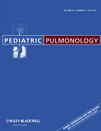Impact of an evidence-based algorithm on quality of care in pediatric parapneumonic effusion and empyema†
Disclosure: The authors have no relevant financial relationships or conflicts of interest to disclose.
Abstract
Objective
To determine whether implementation of a collaborative, evidence-based algorithm for care of pediatric parapneumonic effusion and empyema (PPE) can improve the quality of care delivered.
Study Design
Prospective cohort with retrospective control comparison of children aged 1 month to 18 years admitted with a clinical diagnosis of PPE. Quality improvement techniques were used to develop an algorithm, which was implemented September 2008. Primary outcome measures were decreased median and variability in length of stay (LOS), reduction in the use of chest computed tomography (CT), reduction in the total number of painful procedures, and increased initial use of effective drainage procedures when drainage was indicated.
Results
Compared with controls, algorithm implementation substantially reduced use of chest CT (0% vs. 41% of patients, P = 0.01) with no observed negative impact on LOS. Reductions in median LOS were not significant, but variability in LOS was reduced (P < 0.01 by F-test). Changes in number of procedures and use of effective drainage when indicated were in the predicted direction but not statistically significant.
Conclusions
Quality improvement techniques are an effective means for incorporating evidence-based medicine into pediatric care. PPE can be managed safely without the use of chest CT. Pediatr. Pulmonol. 2011; 46:722–728. © 2011 Wiley-Liss, Inc.




